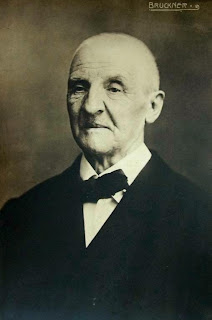Information
Composer: Anton Bruckner
Philharmoniker Hamburg
Simone Young, conductor
Date: 2006
Label: Oehms
http://www.oehmsclassics.de/artikel.aspx?voeid=1906
- Symphony No. 3 in D minor (1873, ed. Nowak): 1. Gemäßigt, misterioso
- Symphony No. 3 in D minor (1873, ed. Nowak): 2. Adagio. Feierlich
- Symphony No. 3 in D minor (1873, ed. Nowak): 3. Scherzo. Ziemlich schnell
- Symphony No. 3 in D minor (1873, ed. Nowak): 4. Finale. Allegro
Philharmoniker Hamburg
Simone Young, conductor
Date: 2006
Label: Oehms
http://www.oehmsclassics.de/artikel.aspx?voeid=1906
----------------------------------------------------------------------------
Review
Simone Young is recording the earliest versions of Bruckner’s first four symphonies, plus the Eighth. I was very impressed by her traversal of the Second, although the score itself does not rise to Young’s level of interpretation (see Fanfare 31:3). The Third, the so-called “Wagner” Symphony, is a more satisfactory work, although I must admit that I prefer the later, trimmer editions. The 1873 original, with its Wagner quotations intact, is given to bloat, and the Adagio is simply unmemorable. That said, Young makes a good case for this edition in an increasingly crowded field. This performance is very slow overall, about the same as Nagano’s, but not as expansive as the unusual Tintner (I’m restricting my comparisons to recordings of the 1873 version). The first movement is especially drawn out, and I may eventually decide that it’s too lugubrious for my taste, but at the moment I appreciate Young’s patience, which makes the music ruminative without dragging, and shows proper respect for the rests. The Adagio, despite its inherent defects, is well paced. The Scherzo shows off the orchestra’s powerful brass—the section plays with lots of punch here, less elsewhere—contrasted with the grace of the strings and woodwinds in the trio section. The same remarks hold for Young’s traversal of the final movement. The DSD-recorded acoustic is big enough to accommodate the orchestra and its climaxes, but the score does not flounder in cathedral reverberation.
This is a very fine version of the 1873 edition. Robert McColley praised the Douglas Nott recording in 28:6; I haven’t heard it, but I’m cautious, not having found much interest in Nott’s Schubert. McColley also approves of the Nagano performance (28:3), while expressing a preference for Tintner (which, unlike the others mentioned, is not a surround-sound SACD). Peter Rabinowitz warns us away from the Marcus Bosch effort in 31:2. At the moment, I’m quite happy with Simone Young.
-- James Reel, FANFARE
More reviews:
http://www.musicweb-international.com/classrev/2008/Mar08/Bruckner3_Young_OC624.htm
http://www.allmusic.com/album/bruckner-sinfonie-nr-3-mw0001394658
http://www.classicalcdreview.com/mc245.html
http://www.amazon.com/Bruckner-Symphony-No-3-A/dp/B0021JLQP6
----------------------------------------------------------------------------
Anton Bruckner (4 September 1824 – 11 October 1896)) was an Austrian composer. His symphonies are considered emblematic of the final stage of Austro-German Romanticism because of their rich harmonic language, strongly polyphonic character, and considerable length. Bruckner composed eleven symphonies, scored for a fairly standard orchestra. His orchestration was modeled after the sound of his primary instrument, the pipe organ.
***
Simone Young (born 2 March 1961 in Sydney) is an Australian conductor. She studied composition, piano and conducting at the Sydney Conservatorium of Music. Young was chief executive of the Hamburg State Opera and chief conductor of the Philharmoniker Hamburg from 2005 to 2015. She was the first woman to have recorded a cycle of Bruckner's Symphonies and Wagner's Ring Cycle.
----------------------------------------------------------------------------
FLAC, tracks
Links in comment
Enjoy!



MEGA
ReplyDeletehttp://adf.ly/1SqCse
or
EmbedUpload
http://adf.ly/1SqCsg